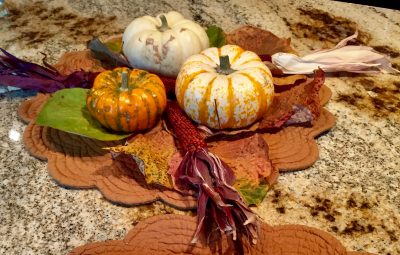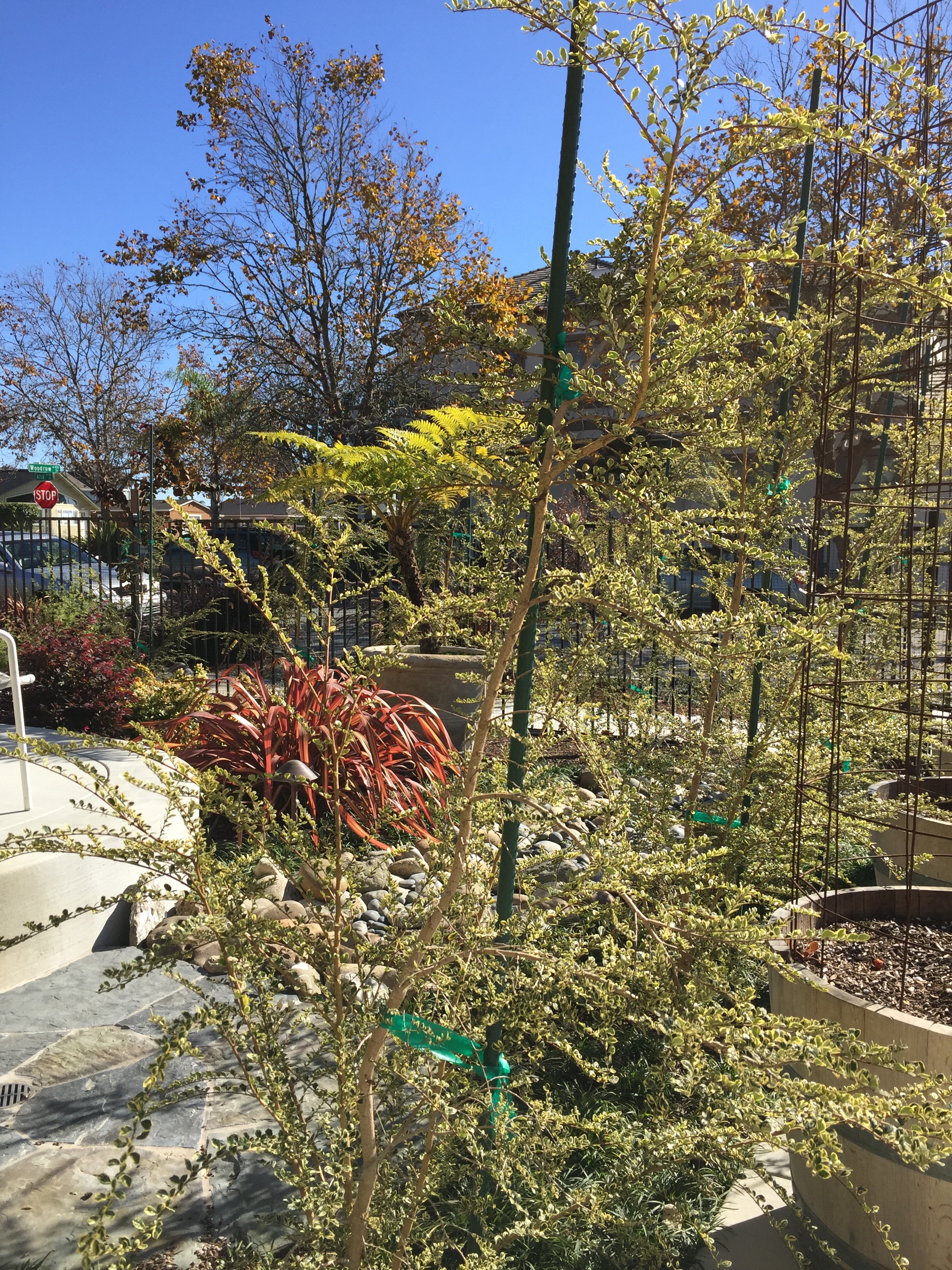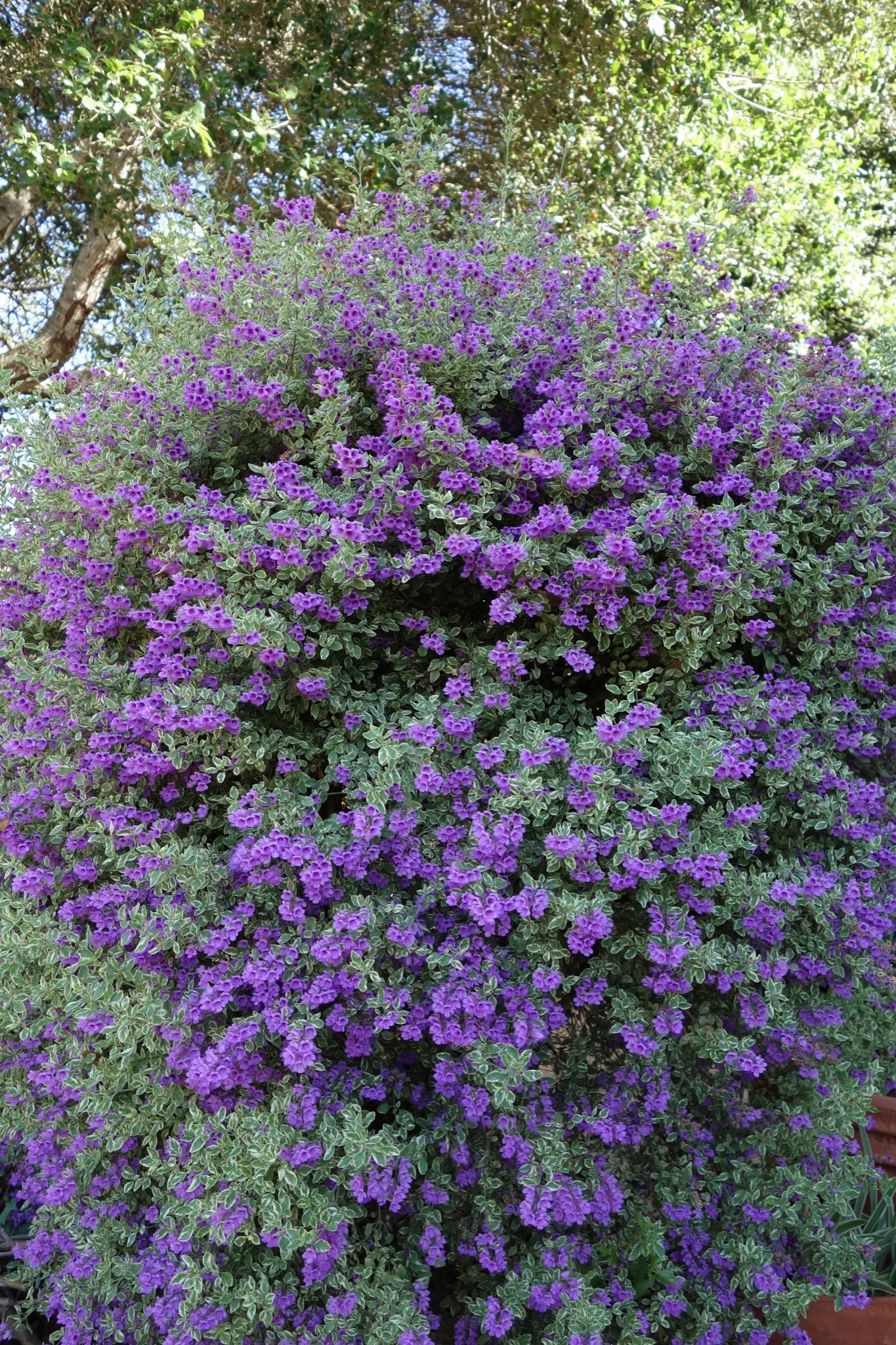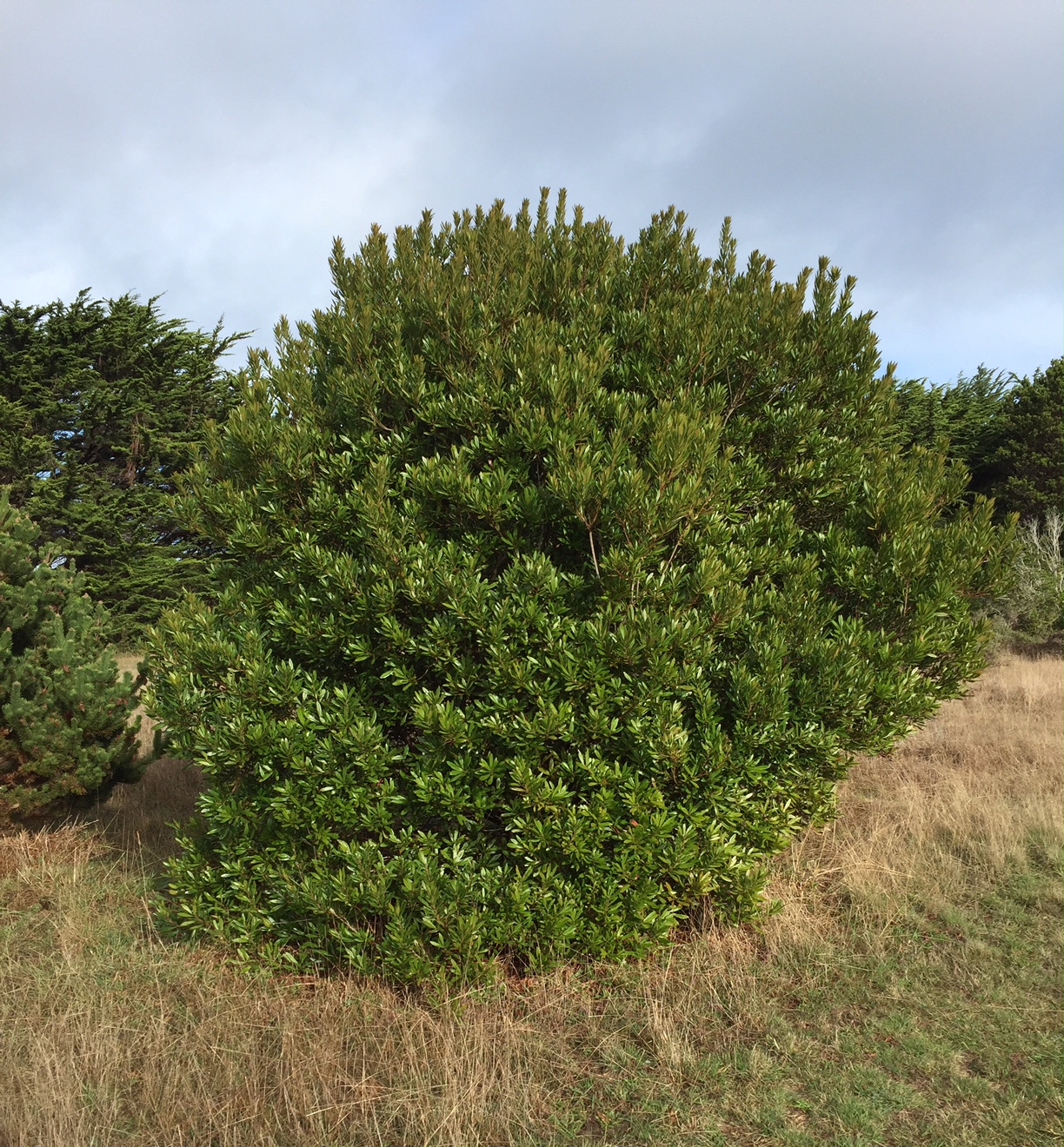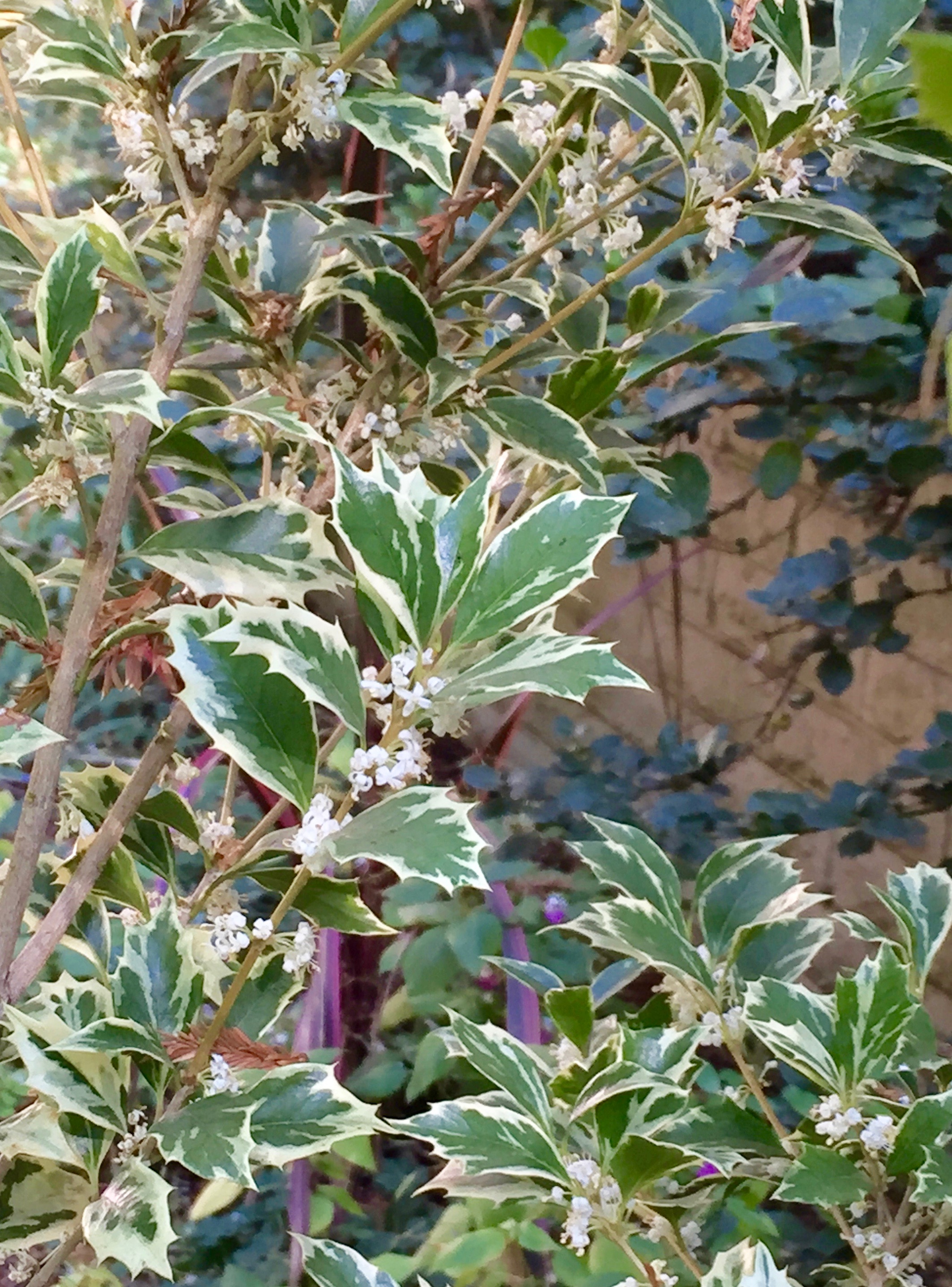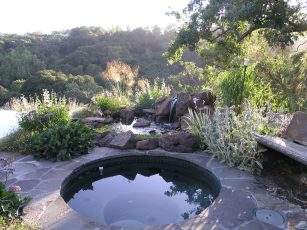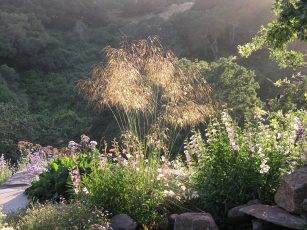If working in the garden Thanksgiving weekend is not high on your list then you?re in luck. Here are some reasons why along with other information you need to know.
In the category of news you can use. A reader shared with me that a plant I mentioned a couple weeks ago in my column about hedges- Italian buckthorn or rhamnus alaternus – has evolved and is now considered invasive by the California Invasive Plant Council. Seems that over the past 3 to 4 years Italian buckthorn ?John Edwards? has overcome the reproduction invasion barrier of being entirely dioecious (having male and female plants separate). The shrub has become a serious problem in riparian and other wildland areas. Birds love the berries which are apparently all female. Thank you to my faithful reader for sharing this information with me. Don?t plant this shrub.
Being that November has was so dry up until the day before Thanksgiving I looked up the current El Nino rain prediction for this winter season. Interesting enough I found lots of info on the surfline website in addition to NOAA. Sounds like we?re still on track for California?s midsection to have an equal chance of more precipitation than other years and warmer than usual from December to February. Can?t come soon enough for me.
For me the growing season is pretty much over except to enjoy what?s left of fall color and the ornamental grasses waving their seed heads in the wind. A lot of perennials are dying back but I?m not in a hurry to neaten things up. The seed heads left in the garden supply food for birds and other creatures while the foliage provides shelter for the plant in the cold and frost. Remove anything when it turns slimy or just plain unattractive but leave berries and seed heads for the birds and winter interest.
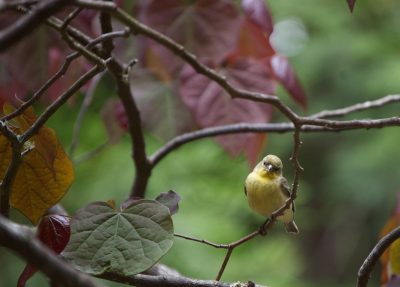
At this time of year my garden is visited mostly by chickadees, nuthatches, goldfinches, purple finches and warblers. They will spend the winter here and I?m doing them a big favor by not cutting back brown foliage containing nutrient-rich seed heads. Some of the reliable seed producers that I won?t have to clean up this weekend include artemisia, aster, coreopsis, penstemon, sedum, lupine, salvia, black-eye Susan, coneflower, phlomis, monarda, agapanthus and grasses.
Chickadees gather hundreds of seeds in fall and early winter and store them in hiding places to ensure themselves a food supply later in the season. They are a remarkable bird that we take for granted being so common. I read in Audubon magazine a couple years ago that a chickadee weighs about as much as a dozen paperclips but their body is large for their weight. This means they have to ramp up the number of hours they devote to feeding. At night chickadees cram themselves into tiny cavities and shiver, burning the day’s fuel to keep from freezing.
Hummingbirds still need a nectar source at this time of year. Anna’s hummingbirds live in this area all year long. So In addition to the plants in my garden that supply nectar I keep my feeders up year-round and keep them clean. They need your nectar even more in the winter when very little is in bloom. In addition to nectar rich natives like mahonia my abutilons are a winter favorite for them.
And I don?t need to prune trees and shrubs at this time of year. Other than clipping a few well placed branches to use in a holiday wreath, I?m off the hook for this task right now. Deciduous trees are still in the process of losing their leaves and are not fully dormant. Evergreens shrubs and conifers can be trimmed lightly but most shaping is done when they start growing in late winter or very early spring.

